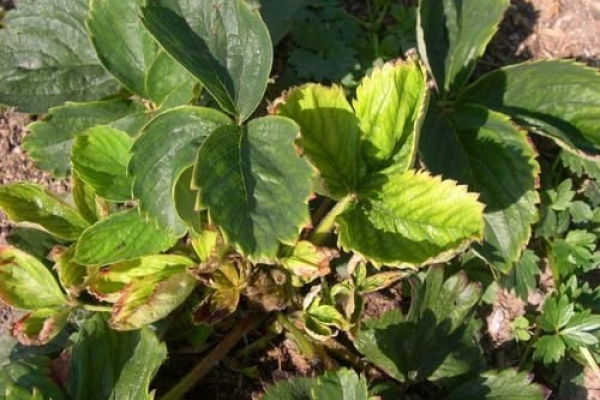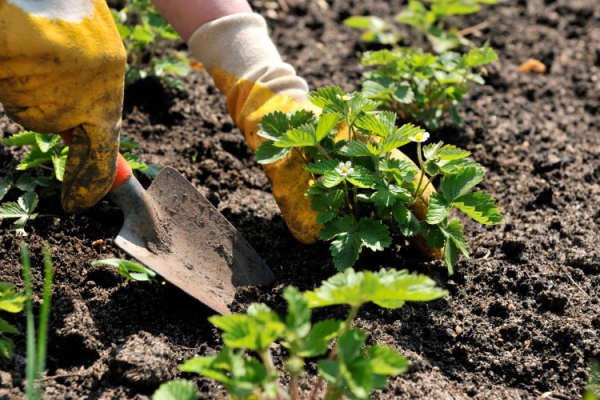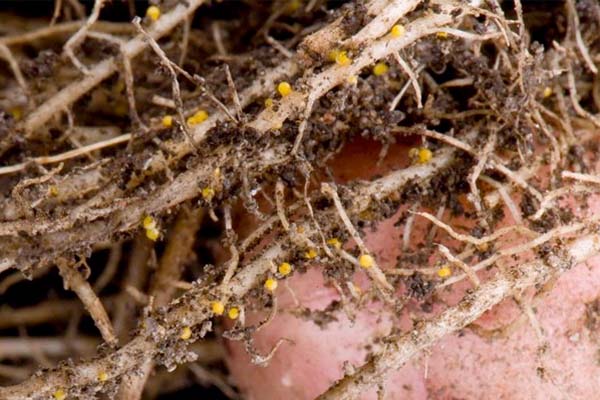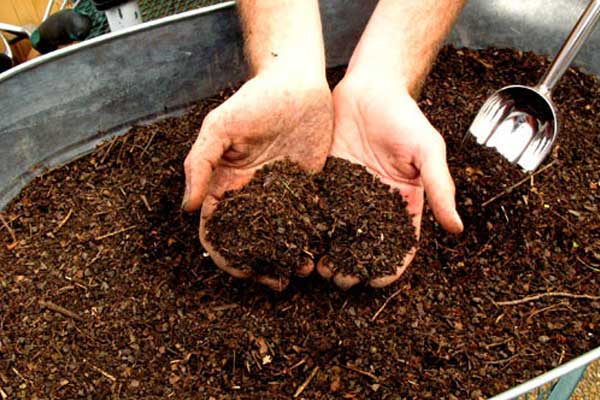Effective methods of dealing with nematode on strawberries
Description
A nematoda is a round worm. The length of its body is no more than one millimeter, but, nevertheless, this small parasite can surprise with its extraordinary gluttony. In the oral cavity of the nematode there is an organ that resembles the shape of small forceps. Their purpose is to attach to the stems and roots of strawberries, as well as inject a special substance into them that causes a chemical reaction. As a result, strawberries turn into an ideal food for the pest. Therefore, the plants are absorbed by the nematode without problems.
Females and males differ in appearance. The females are more rounded. They do not lay eggs, but carry them inside their body. The females attach them to the plant and then turn into a cyst. The number of eggs that are in one cyst is a multi-speaking fact that explains the rapid spread of the pest, since the number can reach a thousand. The danger would not have been so great if not for the high survival rate of the eggs. But, unfortunately, the effects of weather changes or various chemicals are not dangerous for them. Moreover, the eggs can safely remain in the ground for ten years, until they hatch and continue their genus. The color of the nematode is white, sometimes with a yellow tint. Light brown individuals can also be found.
What is the danger
The main danger of the nematode is that during the breeding season of the pest, you will not be able to notice it. The nematoda will attack the soil and strawberries, and as a result, the harvest will deteriorate. And this is at best, because some gardeners are faced with a complete lack of berry harvest due to the fruitful work of this pest.
Of course, it is better to find and remove the nematode at the stage of its reproduction. Unfortunately, this is practically impossible. Although it will not be superfluous to adhere to some rules for a prudent gardener. Dig up a strawberry bush and carefully examine its roots. If they are affected by a nematode, then you may notice many cysts, which are similar in size and shape to a poppy seed, but are colored white. Also, an experienced gardener can see problems with the formation of roots: inhibited development of the root system signals the presence of a parasite. If the lesion is already very strong, then you can observe some metamorphosis of the leaves: they turn yellow, wrinkle, curl, the veins thicken, grow very slowly. Pay attention to the berries - they can take on an unusual shape. There are cases when a nematode affects one or a couple of bushes. As a result, after a while they dry up, and then die, which becomes the cause of the formations in the beds of "bald patches".
There are cases when a nematode affects one or a couple of bushes. As a result, after a while they dry up, and then die, which becomes the cause of the formations in the beds of "bald patches".
How to fight
There are various methods of dealing with nematodes. But still, everyone has one thing in common - it is impossible to get rid of parasites in a week.
A nematoda is dangerous only if the number of larvae per 100 cubic centimeters exceeds a thousand.
Therefore, one of the methods of dealing with a nematode is frequent transplantation.Plants need to be replanted at least once every 4 years, since after this period the yield decreases. But smart gardeners know that transplanting is also needed in order to protect strawberries from nematodes. If you do not have the opportunity to plant plants in a new place every time, then just make an annual interval between plantings.
Eats other methods of dealing with nematode. And you should start with the selection of seedling bushes. Therefore, we have always adhered to some simple but useful rules:
- for transplanting, choose only those seedlings that were grown in healthy soil;
- if you find signs of damage to the roots or leaves by a nematode, then such seedlings must be immediately burned;
- just before transplanting, do not forget to treat healthy seedlings with a solution of parathion or fosdrin.
This is very easy to do. First, completely remove the soil from the roots and immerse them in the solution for 15 minutes. Then rinse them thoroughly under running water, after which the roots must be immersed in hot water for 30 minutes (just not boiling water). After all this, dip the roots into cool water. Now you can plant strawberries in peace.
There are also plants that can repel the nematode. To avoid the appearance of the parasite in the garden, it is enough to plant marigolds, nasturtium or calendula nearby. These plants have a magical repelling effect not only on the nematode, but also on other pests. Some gardeners advise feeding the soil with compost. It creates a favorable environment for the development of fungi. They will not harm human health, however, they destroy parasites.
Give your strawberries the highest level of care to keep them healthy. Remember to constantly remove weeds as well as feed the soil. If a nematode appears on a strawberry, then it is very difficult to get rid of it completely. Your main task is to reduce its amount in the soil. Then the next harvest will be healthy.
Video "Nematodes"
The recordings tell what nematodes are, what their types are and how dangerous they are.
